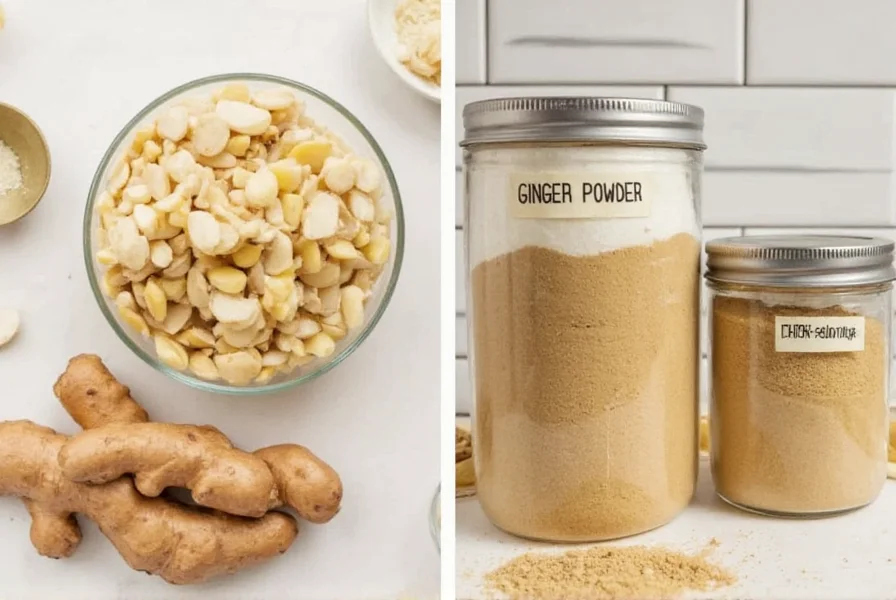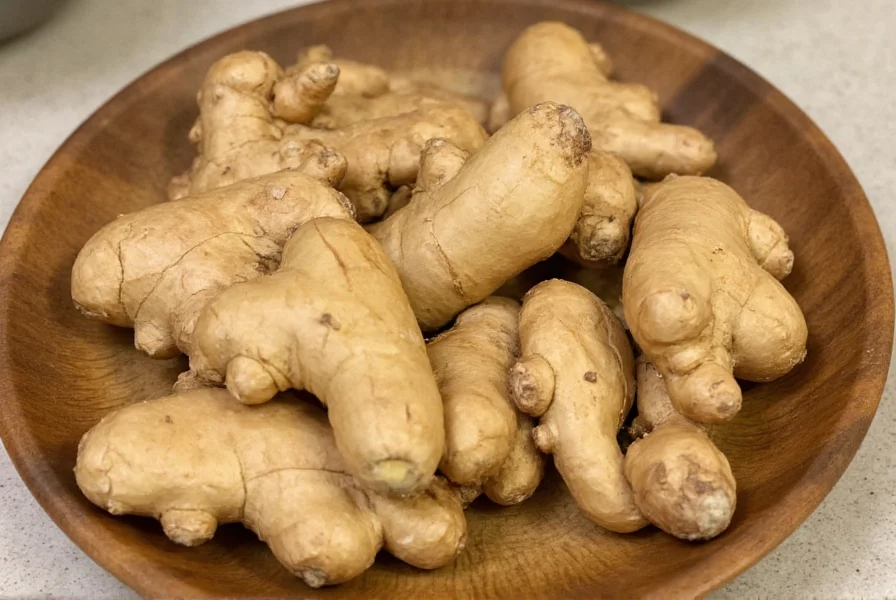Understanding ground ginger equivalents is essential for achieving perfect flavor balance in your cooking and baking. Many recipes specify fresh ginger, but pantry staples often include only the powdered form. Getting these conversions right prevents dishes from becoming overly spicy or lacking ginger's distinctive warmth.
Ground Ginger to Fresh Ginger Conversion Chart
| Fresh Ginger | Ground Ginger Equivalent | Best For |
|---|---|---|
| 1 inch piece (about 1 tbsp grated) | 1/4 tsp ground ginger | Sauces, marinades, stir-fries|
| 2 inches (about 2 tbsp grated) | 1/2 tsp ground ginger | Baking, spice blends|
| 1/4 cup grated | 1 tsp ground ginger | Hearty stews, curries|
| 1/2 cup grated | 2 tsp ground ginger | Gingerbread, holiday recipes|
| 1 cup grated | 1 tbsp ground ginger | Large batch cooking, preserves
Understanding the Flavor Differences
While these conversions provide accurate measurements, remember that fresh and ground ginger have distinct flavor profiles. Fresh ginger offers bright, citrusy notes with a sharper heat that dissipates quickly. Ground ginger delivers a warmer, more concentrated flavor with subtle earthy undertones and longer-lasting heat.
Food scientists explain this difference comes from the dehydration process. When ginger dries, gingerol (the compound responsible for fresh ginger's heat) partially converts to zingerone, which has a mellower, sweeter profile. This chemical transformation means that while the conversion ratios work for measurement, the flavor experience differs slightly.
When to Adjust Beyond Standard Conversions
Certain recipes require nuanced adjustments beyond the basic 4:1 ratio:
- Liquid-based recipes: In soups, broths, and beverages, use 1/8 teaspoon ground ginger per tablespoon of fresh for more balanced flavor
- Baking applications: For ginger cookies or cakes, increase ground ginger by 1/16 teaspoon to compensate for flavor loss during baking
- Asian cuisine: When substituting in stir-fries or curries, add 1/2 teaspoon rice vinegar with the ground ginger to mimic fresh ginger's brightness
- Long-cooking dishes: In stews or braises, add ground ginger midway through cooking rather than at the beginning to preserve flavor
Common Substitution Mistakes to Avoid
Many home cooks make these critical errors when converting between ginger forms:
- Using equal measurements (1:1 ratio) which creates overpowering heat
- Adding ground ginger at the same cooking stage as fresh ginger
- Not accounting for ground ginger's tendency to clump when measuring
- Using old, stale ground ginger which has lost 60-70% of its flavor compounds
For best results, always measure ground ginger with a proper measuring spoon (not a knife edge), and store both forms properly. Fresh ginger lasts 2-3 weeks refrigerated in a paper bag, while ground ginger maintains peak flavor for 6-12 months in an airtight container away from light.

Special Considerations for Dietary Needs
Those managing specific health conditions should note that ground ginger contains more concentrated gingerols per volume than fresh ginger. If you're using ginger for digestive support or inflammation management, consult your healthcare provider about appropriate conversions for therapeutic use.
Professional Chef Tips
Top culinary professionals recommend these advanced techniques:
- "Revive stale ground ginger by toasting it in a dry pan for 30 seconds before use," suggests Chef Maria Chen, culinary instructor
- "For recipes calling for 3+ tablespoons fresh ginger, use half ground ginger and half fresh to get the best of both flavor profiles," recommends pastry chef David Rodriguez
- "When substituting in fermented recipes like kimchi, reduce ground ginger by 25% to prevent overpowering other flavors," advises fermentation expert Dr. Lena Park
Frequently Asked Questions
Can I substitute ground ginger for fresh in ginger tea?
Yes, but use 1/8 teaspoon ground ginger per cup of water instead of the typical 1-inch slice of fresh ginger. Add the ground ginger near the end of steeping to prevent bitterness, and consider adding a squeeze of lemon to mimic fresh ginger's brightness.
Why does my recipe taste different when I substitute ground for fresh ginger?
The flavor difference occurs because fresh ginger contains gingerol that converts to zingerone during drying. Ground ginger has a warmer, less citrusy profile. To bridge this gap, add 1/4 teaspoon lemon zest or rice vinegar when substituting ground for fresh ginger in equal conversion ratios.
How do I convert recipes that call for ginger paste?
One tablespoon of ginger paste equals approximately 1.5 teaspoons of ground ginger. Ginger paste has a consistency between fresh and ground, so this intermediate conversion accounts for its concentrated flavor without the full intensity of powdered ginger.
Does the conversion ratio change for different ginger varieties?
Yes, Jamaican ginger (milder) and Indian ginger (more pungent) have slightly different conversion needs. For Jamaican ginger, use 1/3 teaspoon ground per tablespoon fresh. For Indian ginger, use 1/5 teaspoon ground per tablespoon fresh due to its higher concentration of flavor compounds.











 浙公网安备
33010002000092号
浙公网安备
33010002000092号 浙B2-20120091-4
浙B2-20120091-4